Biblical Jonah Visits Nineveh – The Evil City
David Tee - AncientPages.com - Nineveh, the mere mention of the word may bring thoughts of evil fear to those who read about that great city. Except for one brief period where Nineveh repented in the time of Jonah, it did not serve God but served their desires.
The Ancient City Nineveh
Nineveh means 'gift of God,' but it is hard to see that meaning in the citizens' behavior and deeds throughout its history.
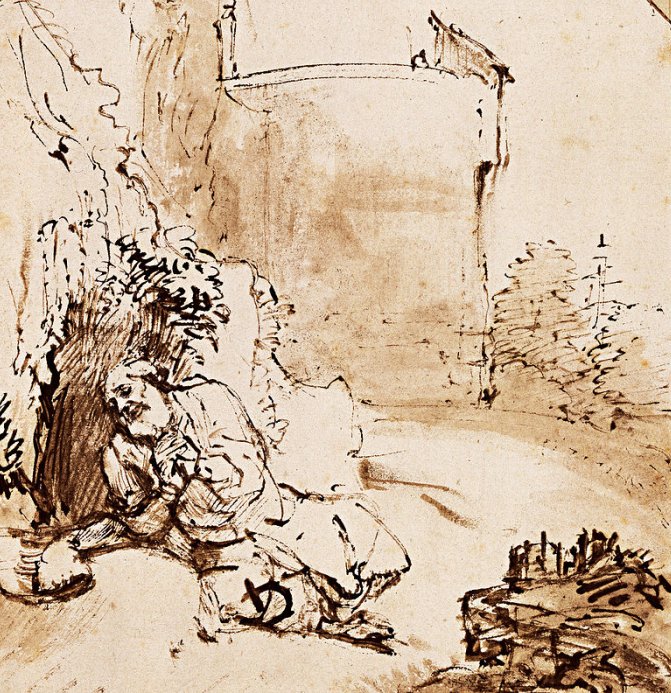
The Prophet Jonah before the Walls of Nineveh, c. 1655; Rembrandt (1606–1669) - TQHqiO_H-vrGbA at Google Cultural Institute - Public Domain
The people of Nineveh and Assyria were feared for their ruthlessness and cruel attitude.
They were also known for being the center of two trade routes. Most of Nineveh's wealth came from the trade centers located in the city. From its humble beginning in prehistory to its demise in 612 BC, the town was located on the Tigris River, just next to the modern city of Mosul.
The city's earlier Akkadian Kings, Manishtushu and Shamshi-Adad I, rebuilt earlier temples dedicated to the God of Nineveh, Ishtar. She was the goddess of war and love. It gives you the idea of why the Ninevites adopted warlike practices. The most famous king of Nineveh, Sennacherib, built himself a 70-room palace rivaling none.
Ashurbanipal, a lesser-known successor to Sennacherib, created a 22,000-volume library discovered in the 20th century. But even this good act did not stop Nineveh's final destruction 15 years later.
Nineveh's Fame
Nineveh's fame is owed to three factors:
- It was a city of war, and its warlike reputation was well earned through its numerous conquests and cruel treatment of those conquered.
 Jonah Preaching to the Ninevites (1866) by Gustave Doré. Public Domain
Jonah Preaching to the Ninevites (1866) by Gustave Doré. Public Domain- The town was built on the north/south and east/west trade routes. Traveling traders would quickly spread their fame and wealth throughout the regions.
- It was famous for its vast library and two temples dedicated to Ishtar.
What Archaeology Says
So far, archaeology has uncovered about 1700 acres of this once-great city and has shown that the city's circumference was about 7.7 miles long. This discovery puts it at odds with the biblical description found in the book of Jonah.
The Bible says that Jonah walked for three days to get to the city's center. So far, archaeology has disagreed with that assessment. Yet, there is a reason for this discrepancy. In the first chapter of his book, The Bible in Its World, K.A. Kitchen, a famous Egyptologist, wrote of a significant enemy archaeology cannot defeat.
Mr. Kitchen pointed out that erosion is one of the main enemies of archaeology and archaeologists. Erosion destroys more ancient sites much faster than almost any other natural disaster.
He also pointed out in the same chapter that archaeologists are lucky if they excavate between 2 and 5% of any site. It means that up to 98% of the size of Nineveh is lost to time, erosion, war, and destruction.
Jonah and Nineveh
The city was nicknamed an evil city probably because, as archaeologist Gordon Franz says in his article Nahum, Nineveh, and Those Nasty Assyrians, they plundered the wealth and the people of the cities they conquered. They often dragged people off with hooks through their noses.
Nineveh - Mashki Gate - Image credit: Omar Siddeeq Yousif - CC BY-SA 4.0
Throughout its over 3,000-year history, Nineveh was not known to be kind and gentle except during the Jonah era. Jonah was a prophet of God, and in his book and the first chapter, we read that the command of God came to Jonah to preach to the city of Nineveh. Besides his book and those opening lines, we only know a little about the man. It is his only appearance in the Bible except for a few references in the New Testament. But those references do not provide more details about his life or family.
The story of Jonah is well known. He did not like the idea of preaching to such an evil city. His reason was mentioned in the last chapter. Jonah knew that God was merciful, gracious, and compassionate and would spare the city of its coming judgment if they repented.
Jonah eventually was convinced to go, and he went and preached to the people of Nineveh. His preaching was a success and probably more significant than the two Great Awakenings in American history. Everyone, from the king down to the lowest member of Nineveh society, repented and turned away from their evil ways.
Jonah did not celebrate when the revival occurred like most modern preachers do today. He fell into a great depression, and we can only speculate that he was like many of Nineveh's enemies. He wanted to see Nineveh pay for their crimes, not be redeemed from them.
From Jonah's 4th chapter, we get the minimum number of people who live in the city. Jonah 4:11 tells us that over 120,000 people lived within the walls of Nineveh. An exact population count cannot be done due to the loss of civic records and most buildings that populated the city.
The Change Of Heart Did Not Last
It is the sad part of the story of Nineveh. It was only a short time after the revival and Jonah's preaching that the people of the great city turned back to their evil ways. It prompted God to send another prophet, warning them of a coming judgment. This time, the warning was unsuccessful. The city was destroyed by the Babylonians and Medes in 612 BC.
Some Final Words
Nineveh's remarkable story ended in the 7th century B.C. after over 3,000 years of existence. It was one of the oldest cities in antiquity. The Bible tells us that Nimrod was the city's founder, and was when God divided the world's languages and separated the people scattering them across the earth.
Written by – David Tee AncientPages.com Staff Writer
Updated on October 1, 2023
Copyright © AncientPages.com All rights reserved. This material may not be published, broadcast, rewritten or redistributed in whole or part without the express written permission of AncientPages.com
Expand for referencesMore From Ancient Pages
-
 Spectacular Find: Lost Temple Of Goddess Artemis Has Been Found On Greek Island Of Euboea
Archaeology | Sep 22, 2017
Spectacular Find: Lost Temple Of Goddess Artemis Has Been Found On Greek Island Of Euboea
Archaeology | Sep 22, 2017 -
 Mysterious Ancient Underwater Structure Beneath MacDonald Lake Reveals Traces Of A Lost Civilization In Ontario
Civilizations | Nov 15, 2018
Mysterious Ancient Underwater Structure Beneath MacDonald Lake Reveals Traces Of A Lost Civilization In Ontario
Civilizations | Nov 15, 2018 -
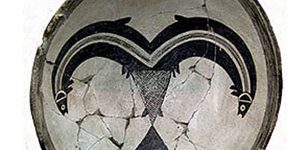 What Happened To Mimbres People – Recently Examined Puzzle Gives Some Clues
Archaeology | Dec 29, 2021
What Happened To Mimbres People – Recently Examined Puzzle Gives Some Clues
Archaeology | Dec 29, 2021 -
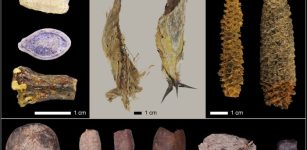 El Gigante Offers Lessons In Sustainability, Evolution And Human Adaptation, Courtesy Of The Holocene
Archaeology | Jun 29, 2023
El Gigante Offers Lessons In Sustainability, Evolution And Human Adaptation, Courtesy Of The Holocene
Archaeology | Jun 29, 2023 -
 Unique Wooden Stave Churches Were Built Without Nails – Remarkable Technology Helped Them Survive
Featured Stories | Nov 15, 2022
Unique Wooden Stave Churches Were Built Without Nails – Remarkable Technology Helped Them Survive
Featured Stories | Nov 15, 2022 -
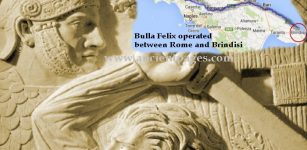 Bulla Felix: Legendary Italian Leader Of Outlaws Who Robbed The Rich And Gave To The Poor
Featured Stories | Mar 23, 2023
Bulla Felix: Legendary Italian Leader Of Outlaws Who Robbed The Rich And Gave To The Poor
Featured Stories | Mar 23, 2023 -
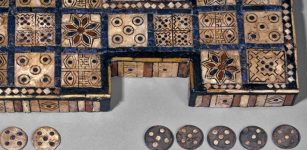 Royal Game Of Ur – One Of The Oldest Game Boards Discovered
Ancient History Facts | Feb 3, 2016
Royal Game Of Ur – One Of The Oldest Game Boards Discovered
Ancient History Facts | Feb 3, 2016 -
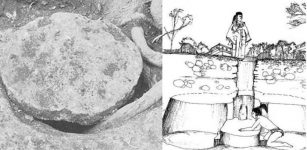 Mysterious Chultuns – Ancient Underground Chambers Built By The Maya – But For What Purpose?
Featured Stories | Jun 24, 2017
Mysterious Chultuns – Ancient Underground Chambers Built By The Maya – But For What Purpose?
Featured Stories | Jun 24, 2017 -
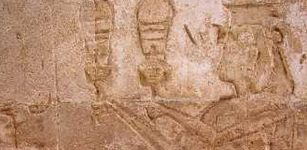 Female Pharaoh Twosret Was Exploited, Used And Almost Erased From History
Featured Stories | Apr 11, 2019
Female Pharaoh Twosret Was Exploited, Used And Almost Erased From History
Featured Stories | Apr 11, 2019 -
 Mysterious Code Hidden In Antique Silk Dress Bought In Maine Finally Deciphered!
Artifacts | Jan 23, 2024
Mysterious Code Hidden In Antique Silk Dress Bought In Maine Finally Deciphered!
Artifacts | Jan 23, 2024 -
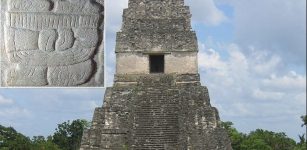 On This Day In History: Teotihuacan’s Warlord Siyaj K’ak’ Conquers Tikal – On Jan 16, 378
News | Jan 16, 2017
On This Day In History: Teotihuacan’s Warlord Siyaj K’ak’ Conquers Tikal – On Jan 16, 378
News | Jan 16, 2017 -
 Meidum ‘Collapsed’ Pyramid Of Great Builder Pharaoh Snefru
Featured Stories | Jan 2, 2017
Meidum ‘Collapsed’ Pyramid Of Great Builder Pharaoh Snefru
Featured Stories | Jan 2, 2017 -
 Will Egypt be able to buy back the 4500-year-old statue of Sekhemka?
Artifacts | Aug 26, 2015
Will Egypt be able to buy back the 4500-year-old statue of Sekhemka?
Artifacts | Aug 26, 2015 -
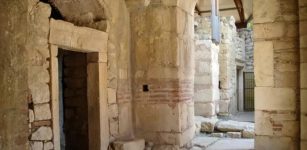 Has The Tomb Of The Real Santa Claus Been Found In Turkey?
News | Oct 5, 2017
Has The Tomb Of The Real Santa Claus Been Found In Turkey?
News | Oct 5, 2017 -
 Pre-Columbian Societies Declined 2,000 Years Ago Due To Sea Level Fall
Archaeology | Dec 22, 2021
Pre-Columbian Societies Declined 2,000 Years Ago Due To Sea Level Fall
Archaeology | Dec 22, 2021 -
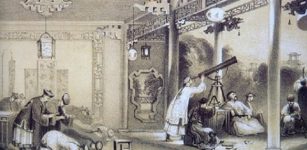 On This Day In History: Sunspot Observed By Chinese Astronomers During The Han Dynasty – On May 10, 28 BC
News | May 10, 2016
On This Day In History: Sunspot Observed By Chinese Astronomers During The Han Dynasty – On May 10, 28 BC
News | May 10, 2016 -
 On This Day In History: Munich Agreement Was Signed – On Sep 30, 1938
News | Sep 30, 2016
On This Day In History: Munich Agreement Was Signed – On Sep 30, 1938
News | Sep 30, 2016 -
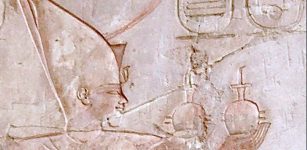 Magnificent Pre-Dynastic City Of Sais And Its Lost Neglected Ruins
Civilizations | Sep 29, 2020
Magnificent Pre-Dynastic City Of Sais And Its Lost Neglected Ruins
Civilizations | Sep 29, 2020 -
 Mysterious Disappearance Of Philip Christoph Königsmarck – Where Is The Swedish Count Buried?
Featured Stories | Feb 21, 2024
Mysterious Disappearance Of Philip Christoph Königsmarck – Where Is The Swedish Count Buried?
Featured Stories | Feb 21, 2024 -
 Can Stonehenge Be Saved From Bulldozers Or Have Druids Been Defeated?
News | Nov 10, 2020
Can Stonehenge Be Saved From Bulldozers Or Have Druids Been Defeated?
News | Nov 10, 2020

